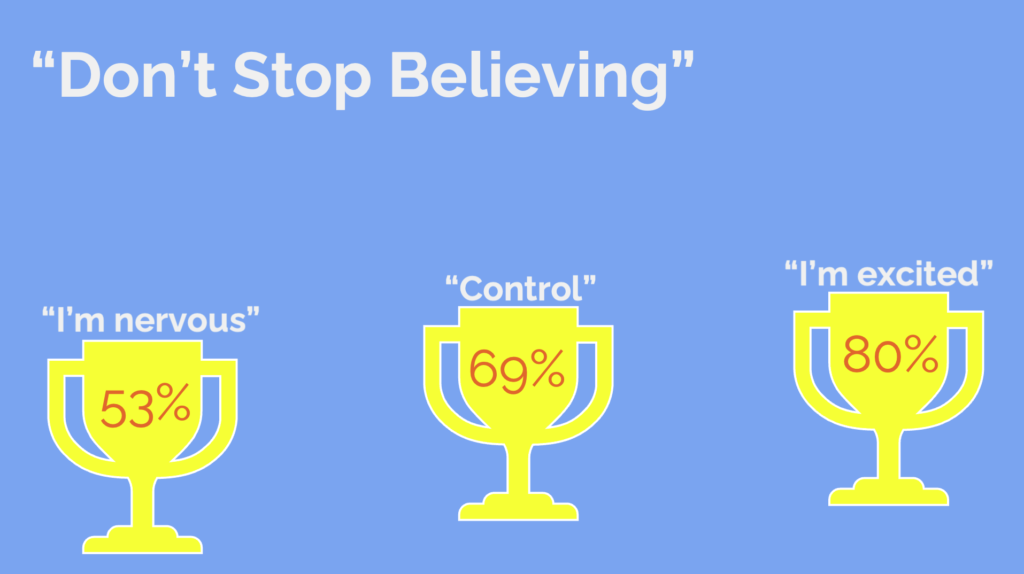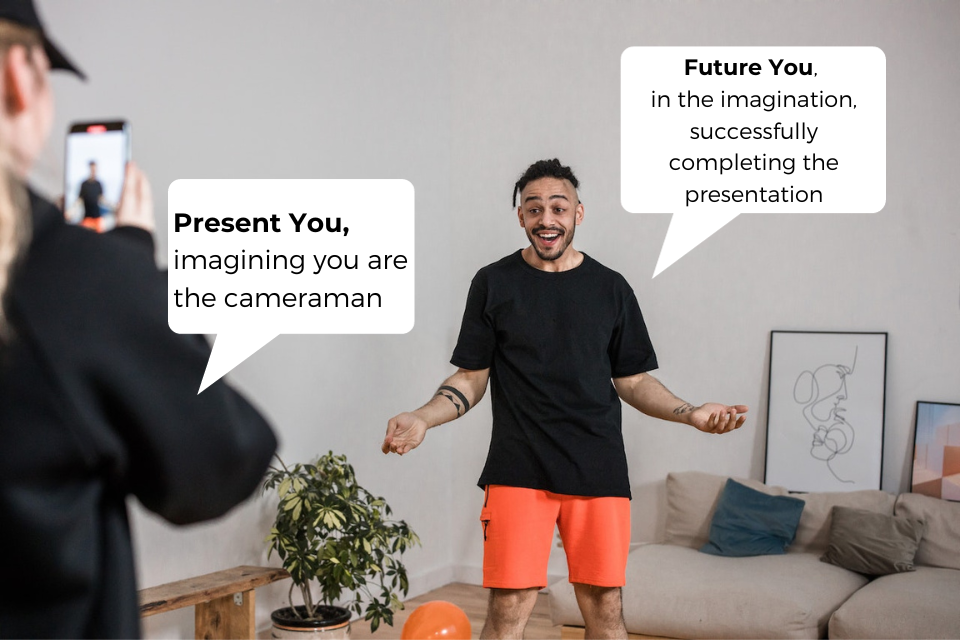Speaking on stage or in front of a crowd can be a nerve wracking experience, especially when you are new to doing this. I remember I used to have stage fright when I first spoke in front of a crowd. After 20 years of delivering keynotes, conducting trainings and doing corporate presentations in front of group sizes of up to hundreds at a time, I’m glad I no longer feel that nervous when speaking I do public speaking.
These 5 tips will definitely help you feel more confident on stage:
Prepare, Prepare, Prepare.
There’s a Chinese saying that says, “3 minutes on stage, but 3 years of preparation”. Unless you are a seasoned speaker who is very well versed in the topic that you are presenting, you have to spend hours or days preparing your materials.
I am someone who struggles to memorise long scripts. So what you can do is to remember the main points of each slide (or part of the story) and just explain those points as you would to a friend.
Some of my presentation skills students prefer to memorise entire scripts and that has worked very well for them. Whatever your strategy is, you must be familiar with your materials. By just looking at that slide, you should already know how to explain it and not have to struggle to think about what you should say next.
You can prepare by running through your slides or script over and over again. After you are familiar with your script, get an audience – either your work team, your best friend or your partner. Get them to sit down and watch you deliver your presentation.
By just getting someone to give you feedback, you may get valuable pointers on how to improve your delivery. The more familiar you are with your materials and the topic, the more confident you will feel.
Vary Your Voice Tones & Use Gestures
No interesting speaker delivers a speech in a monotonous way. You have to get excited and speak in an exciting manner if you want your audience to feel the excitement. You have to feel what you want the audience to feel, and that will be amplified through your tonality and gestures.
I’m not sure if you run, but I’m pretty sure that you have run at some point in your life. If you try running with your hands held stiffly by your sides, you will feel that your legs somehow cannot swing comfortably.
You will need to swing your hands from side to side, as your legs swing back and forth so that your movement is in sync and fluid. If fact, the more you swing your hands, the more your legs will follow.
Stage presentation is similar, the more you use your gestures and vary your voice tones, the more your emotions will flow – they complement one another.
You can start incorporating gestures into your presentation by simply watching videos of how other speakers do it and copying some of those gestures. Generally, the gestures cannot contradict the point that you are making – if you say, “big”, be sure to gesture with arms open wide.
Also, on stage, if you are speaking to a large audience, you will need to exaggerate your movements a little more as compared to when you are speaking to a room a smaller audience, as participants seated far away from the stage will only see a small figure on stage.
Engage the Audience
People start to disengage mentally with a speaker when they can kind of predict what he is going to say or do. If you are predictable, they will label you as a “boring speaker”.
I have seen speakers who hit a ball with a golf club towards the audience, eat fire and do backflips to capture the attendance of the audience – those are extraordinary, and people will find them “interesting”.
Fortunately, we have an alternative. When the audience are busy doing something else, they have lesser mental capacity to predict what you are going to do next. This is why it is important to have activities that engage the audience.
Some activities you can use to get the audience engaged:

1. Get them to say something to the people around them
2. Stick something underneath their seats before the presentation for your activity
3. Follow your instructions to practice a pose or do a stretch
4. Compete with other sections of the audience to sing/ clap/ chant a slogan
5. Asking the audience to applause – this actually does 2 things: it helps them feel engaged and it can raise your confidence and energy on stage [2].
Self Talk
Alison Wood Brooks, a well-known Harvard Social Psychologist, conducted an experiment by getting 3 groups students to sing “Don’t Stop Believing”, while a computer software grades them on their pitch, rhythm and accuracy.
There was a control group where they were not instructed to do anything before the “impromptu singing examination”, there was a second group where they were told to tell themselves “I’m nervous, I’m nervous, I’m nervous…” before they started singing and the final group was asked to repeatedly tell themselves “I’m excited” before they started.
The grading software gave the control group an average of 69%, the “I’m nervous” group got 53% and the “I’m excited” group receive an average of 80% [1].

By simply reframing nervousness as excitement, our physiology reacts differently and gives us a different result.
This experiment also tells us that, everything else being equal, what we tell ourselves (probably whether in our minds or spoken out loud) has an impact on our thinking, and feelings and therefore our behaviour, and performance.
Disassociated Mental Rehearsals
Think about the time you were really nervous doing a presentation, did it feel the strongest before, during, or after your presentation? I asked this same question to hundreds of participants before, it is almost always before, when you are about to start the presentation or right at the beginning of the delivery.
It is also never after the presentation, which makes sense, because of the fact that the nervousness stems from our worry that something might go wrong during our presentation.
When the presentation is over, there is no longer a need to be nervous. We often feel a sense of relief after the presentation.
One exercise that I get my students to do is Disassociated Mental Rehearsals.
If you think about the last time you were extremely nervous about a presentation, in that memory, were you looking through your own eyes or do you see yourself in your mental image?
9/10 times people are looking through their own eyes. This is what we call “associated memory”. We feel the strongest emotions when we imagine ourselves in a particular situation, looking through our own eyes, feeling those emotions all over again.
By simply shifting our viewpoint, or “camera angle”, of that imagination to a further position, where we are not inside our own body, but more like a cameraman taking a photo or video of us in that situation, you will experience that the emotions that we are feeling will tone down very significantly.

The trick here, is that the Present You, is imagining the Future You successfully completing the presentation. Do this exercise the next time you feel the jitters while waiting to go on stage and watch that feeling of nervousness melt like butter!
If you are looking at a course that can help you Present Like A Boss, check out our Online & Stage Presentation courses here.
Sources
- Alison Wood Brooks – Get Excited: Reappraising Pre-Performance Anxiety as Excitement
https://www.hbs.edu/faculty/Pages/item.aspx?num=45869 - Why We Clap: The Psychology of Applause
https://www.psychologytoday.com/us/blog/cutting-edge-leadership/202201/why-we-clap-the-psychology-applause#:~:text=Clapping%20can%20be%20a%20sign,a%20universal%20body%20language%20signal.